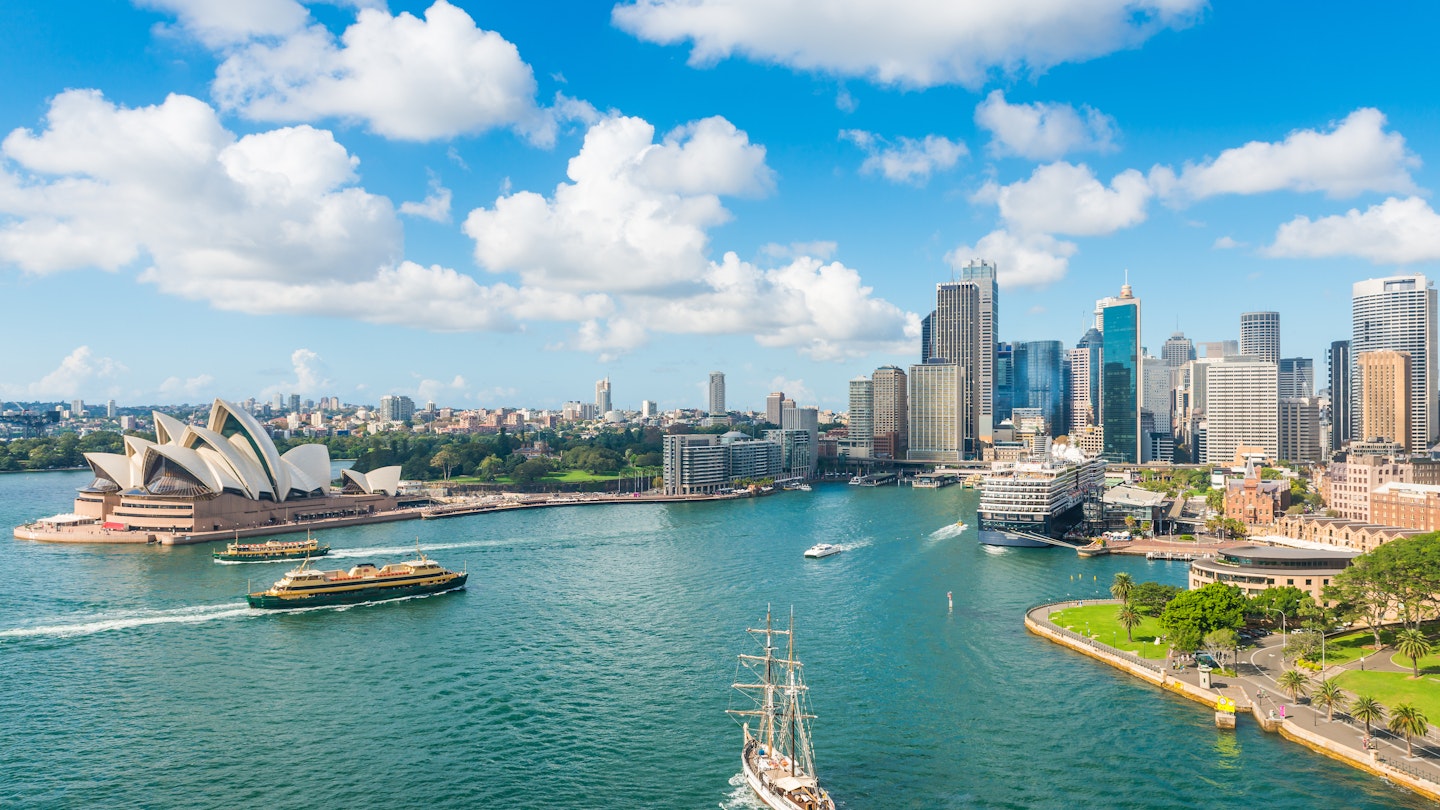Travel Restrictions and Lockdown Status in Australia Amid COVID-19
confirmed its first case of coronavirus on January 25 and recorded its first death one month later. By the end of March, overseas travel was banned and social restrictions went into effect – measures that seemed to work at first. Restrictions began to lift at the start of May, but months later, there’s been a significant surge in Melbourne, and the city is now in the middle of another hard lockdown, which this week was extended until September 28. Here’s the latest:
Travel Restrictions in Australia
Australia’s borders are closed to all but Australian citizens, residents, and immediate family members, citizens of New Zealand who reside in Australia, and New Zealanders transiting to New Zealand, barring a handful of exceptions. Health screenings may occur upon arrival, and anyone who shows signs of infectious disease in transit will be assessed on the plane and either quarantined or hospitalized upon arrival.
To ease pressure on quarantine facilities, the number of Australians permitted to return home is currently being strictly regulated. Transit passengers cannot travel within Australia, but they can leave on an international flight departing from the same city, as long as the time between flights is less than eight hours and they remain at the airport for the duration. If the wait is between eight and 72 hours, quarantine is mandated at a state-designated facility.
Domestic travel is allowed in some locales, but Australians are restricted from travelling overseas, and foreign-flagged cruise ships are banned from docking at Australian ports until at least September 17.
Will I Have to Quarantine When I Arrive in Australia?
A 14-day quarantine at designated facilities is mandatory upon arrival for all incoming travelers. No domestic travel or connecting flights are allowed before the quarantine is completed, and testing for COVID-19 may also be required.
After deplaning, passengers are instructed to collect their luggage and go through customs, immigration, and biosecurity, then take a bus to the hotel where they’ll quarantine until they receive medical clearance. In some states and territories, travelers may have to chip in for the cost of quarantine, and COVID-19 tests may be administered during quarantine as well.

Current Lockdown Status in Australia
Restriction levels vary from state to state.
In Victoria, where hundreds of new cases were reported in mid-July, a stage four lockdown is in place in Melbourne as of August 2, and will remain in place until at least September 28. Curfews are in effect from 9 pm to 5 am every evening. People are only allowed to leave their house for work and essential health, care, or safety reasons. Everyone must wear a face mask outside of the home. Regional Victoria including Mitchell Shire have moved to a stage three lockdown, meaning everyone must stay home except to leave for food and supplies, study or work, care and healthcare, and for exercise and outdoor recreation. Everyone must wear a mask, and no visitors are allowed in others’ homes, and residents are only allowed to gather with one person from outside their household in public. Melbourne will enter its second step out of lockdown on September 28 with schools and factories open and from October 26 it will go into the third step, with cafes and restaurants reopening, mostly for outdoor service, and non-essential shops and hairdressers back in business.
The border between Victoria and New South Wales is currently closed. As of August 7, New South Wales residents returning from Victoria will have to go into mandatory hotel quarantine for 14 days at their own expense.
Within New South Wales, regional travel is permitted. Caravan and camping parks as well as some NSW National Parks are open; museums, galleries, and libraries are operational, and pubs, clubs, cafes, and restaurants are open, though capacities are restricted. The NSW government has updates on restrictions and health advice.
Queensland’s borders are closed to interstate travel from New South Wales, the Australian Capital Territory, and Victoria as of August 20. Western Australia and Tasmania are closed to non-essential travel, but other states and territories are easing back into local, regional, and interstate travel. The Australian tourism board’s interactive status map is a good resource for planning purposes.
What They’re Saying in Australia About COVID-19 and Travel
Before cases spiked in Melbourne, Australia was easing travel restrictions and lifting social-distancing protocols across the country, and regions hard-hit by the lack of travelers were beginning to bounce back. Now, though, the situation has changed, and sentiments have shifted. In September, Reuters reported that restrictions would be relaxed gradually before the end of the month if infection rates subside. State Premier Daniel Andrews stated that if the state resumed operations too quickly, it would be on track for a third wave by mid-November. “You’ve got to defeat the second wave and do it properly. Otherwise, you just begin a third wave. A third wave will mean we can’t do the economic repair that people desperately want us to do,” he told the publication.
Meanwhile, the much-touted travel bubble between Australia and New Zealand , but the South China Morning Post reports that the country is being considered for a similar arrangement with Hong Kong. Commerce minister Edward Yau Tang-wah stated, “we need to ensure that a coronavirus test – that is mutually recognized – can be carried out before travelling, and another verification is needed after arrival.”
This article was first published on Jul 28, 2020, and updated on Sep 9, 2020.




